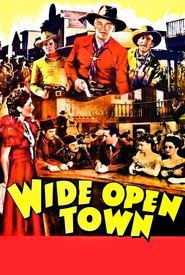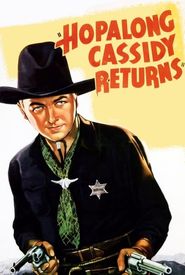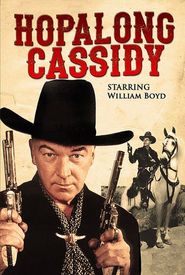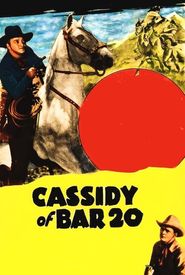Clarence Mulford, a legendary figure in the world of Western literature, burst onto the scene with his creation of the quintessential cowboy, Hopalong Cassidy, a character whose enduring popularity has stood the test of time. Born in the charming town of Streator, Illinois, in the year 1883, Mulford hailed from a family with a storied past, boasting a heritage that stretched back to the year 1643, when the Mulfords first set foot in the New World.
As Mulford's academic journey came to a close, he embarked upon a professional path by securing a position with the esteemed "Municipal Journal and Engineer" newspaper in the bustling metropolis of New York.
Concurrently, he pursued his passion for storytelling, committing a significant amount of his time to crafting engaging narratives that would eventually find their way onto the pages of various publications.
His initial foray into the world of literary journalism commenced with a contribution to the influential "Metropolitan" magazine, marking the debut of his written work in the public sphere.
Furthermore, the prominent "Outing" magazine soon took notice of Mulford's burgeoning talent, opting to serialize a series of his captivating "Bar 20" short stories, which would go on to feature the iconic Hopalong Cassidy character, forever etching his name in the annals of literary history.
Mulford's early literary endeavors in the Western genre were characterized by an unwavering commitment to meticulous research, meticulously pouring over a vast wealth of data related to the American West, carefully compiling an exhaustive repository of knowledge that served as the foundation for his writings.
However, as his career progressed, Mulford's works became increasingly informed by his own personal experiences, shaped by the countless miles he traversed throughout the region, immersing himself in the very landscapes and cultures he sought to capture on the page.
To facilitate his research, Mulford maintained a vast and meticulously organized card file, comprising over 17,000 individual cards, each meticulously categorized and cross-referenced, covering a staggering array of topics, including the art of fur trapping, the grueling cattle drives that crisscrossed the open ranges, the storied history of the Pony Express, and the rugged world of the freight-wagon industry, among many others.
For a considerable period of time, Mulford found himself disenchanted by the stark contrast between his literary depiction of Hopalong Cassidy and the cinematic adaptations that followed.
In his novels, Cassidy was portrayed as a rugged individual, with a rough exterior and a prickly demeanor, often lashing out with a foul mouth and a crusty attitude, conveying the image of an old man worn down by the harsh realities of the Wild West.
However, in the film adaptations, this gritty, rough-around-the-edges character was transformed into a refined, articulate, and courteous gentleman, played by the charismatic William Boyd, who brought a level of sophistication and elegance to the role that was far removed from the rough-hewn character that Mulford had created on the page.
Initially, Mulford harbored doubts and misgivings about the disparity between the original material and the film adaptations, his skepticism and uncertainty causing him to hesitate and even refuse to engage with Boyd, the person responsible for the discrepancies.
However, as time passed, Mulford's initial reservations gradually gave way to a newfound understanding and appreciation for the film adaptations, which he had previously viewed with a critical and jaundiced eye.
The turning point came when Mulford finally agreed to meet with Boyd, a gesture that marked a significant shift in his perspective and a willingness to listen and engage with the person responsible for the creative decisions.
During their meeting, Mulford and Boyd developed a rapport, their conversation flowing easily and naturally as they discussed their shared passion for the original material and their differing interpretations of it.
As a result of their meeting, Mulford's discontent with the film adaptations began to dissipate, replaced by a newfound sense of understanding and respect for the creative process and the people involved in bringing the original material to life.
In the end, Mulford's initial doubts and misgivings gave way to a renewed appreciation and enthusiasm for the film adaptations, a testament to the power of open communication and the importance of collaboration and understanding in the creative process.
Biography of Mulford:
Mulford is a highly respected and accomplished individual with a long history of involvement in the creative arts. Born and raised in a small town in the Midwest, Mulford developed an early passion for writing and storytelling, which he nurtured through his childhood and teenage years.
After completing his education, Mulford set out to make a name for himself in the competitive world of publishing, where he quickly established himself as a talented and innovative writer and editor.
Throughout his career, Mulford has been known for his keen eye for detail, his ability to craft compelling and engaging stories, and his dedication to his craft.
Despite his many accomplishments, Mulford has never lost sight of his humble beginnings and remains committed to using his talents to make a positive impact on the world.
Clarence Mulford, a notable individual, breathed his last on May 10, 1956, in the city of Portland, situated in the state of Maine, as a direct result of complications arising from surgical interventions aimed at rectifying the extensive lung damage he had incurred in a devastating fire that had ravaged his life in the year 1947.












































































